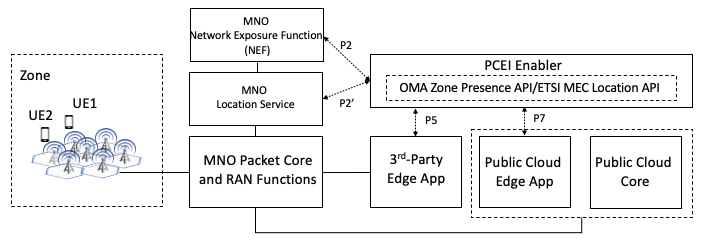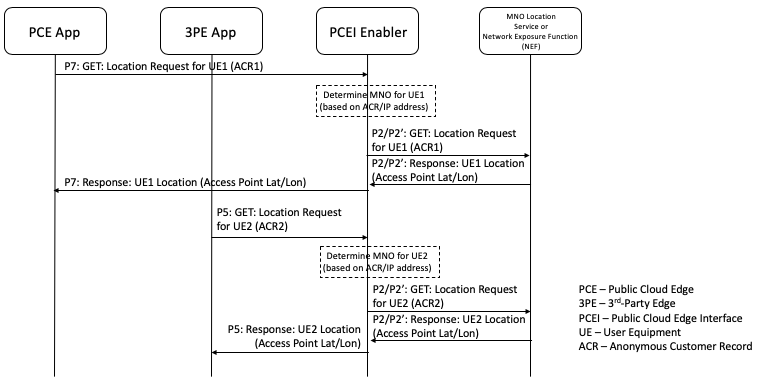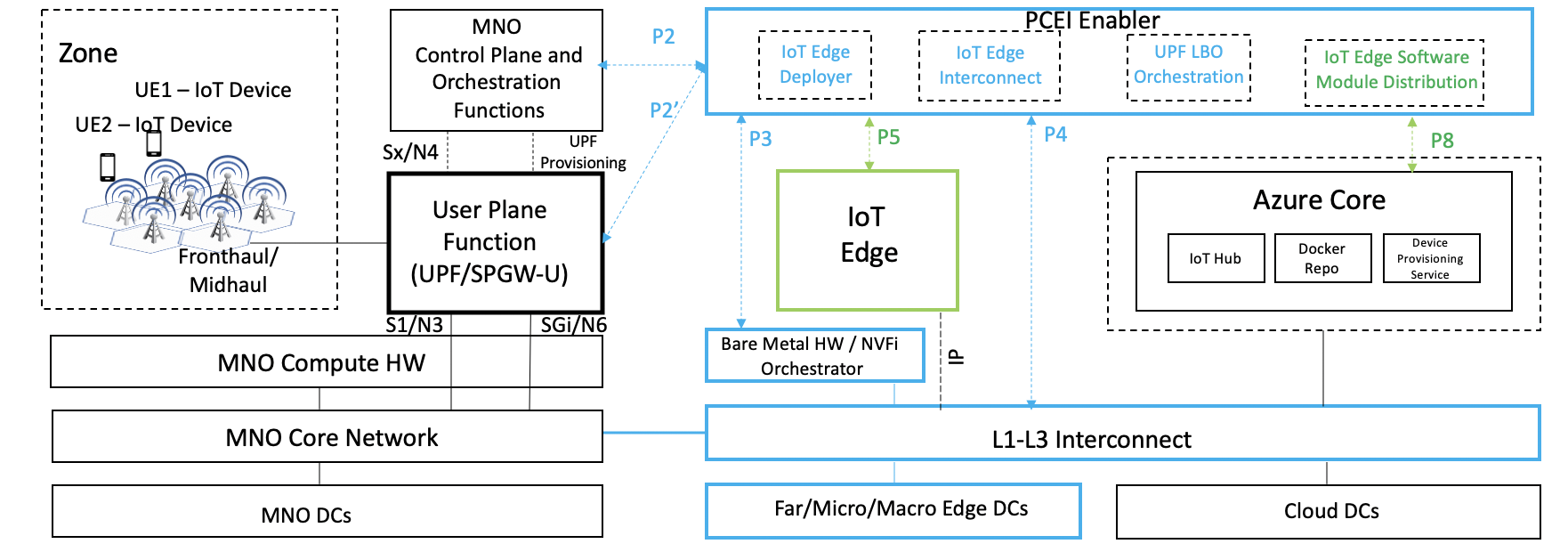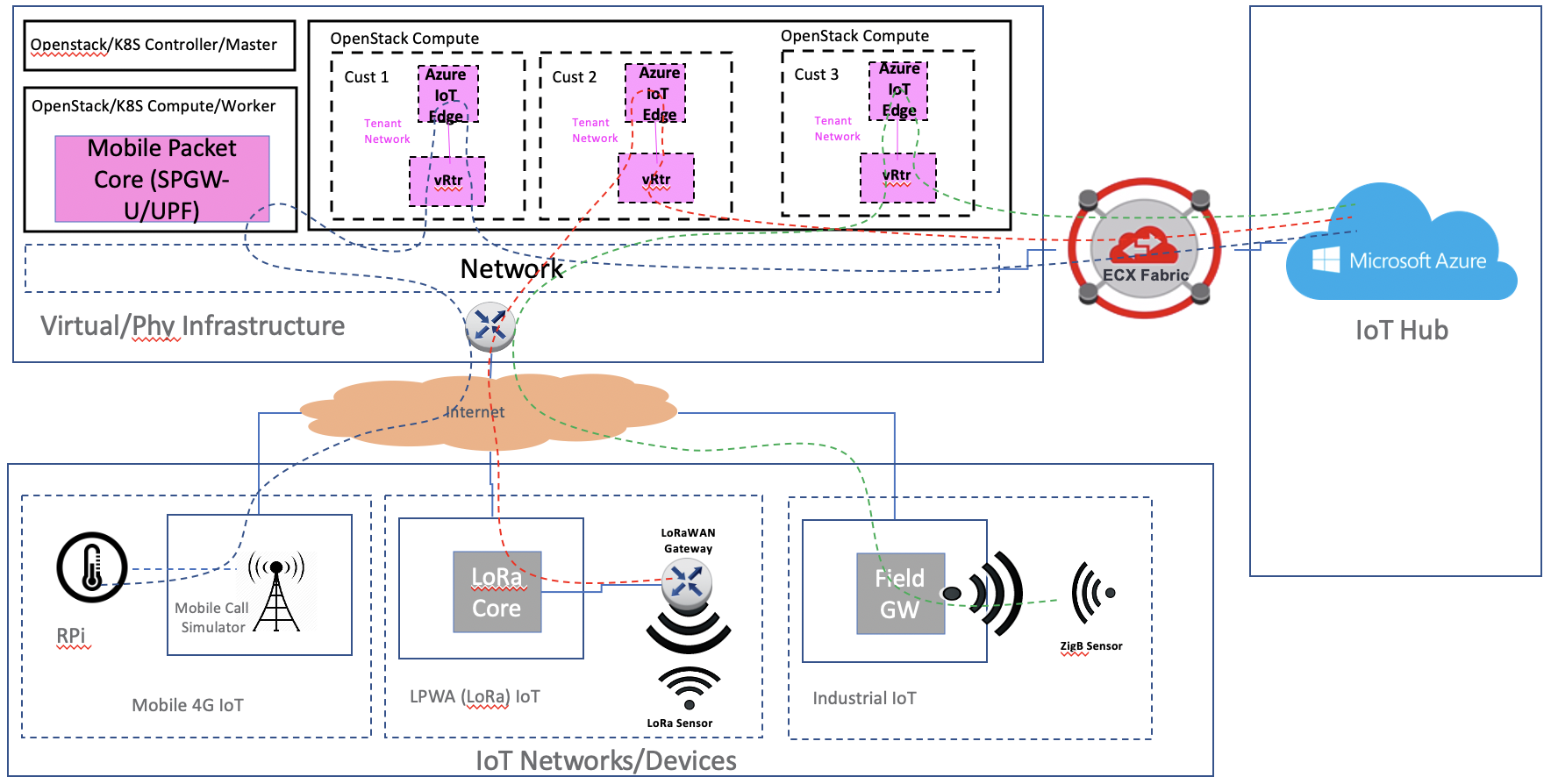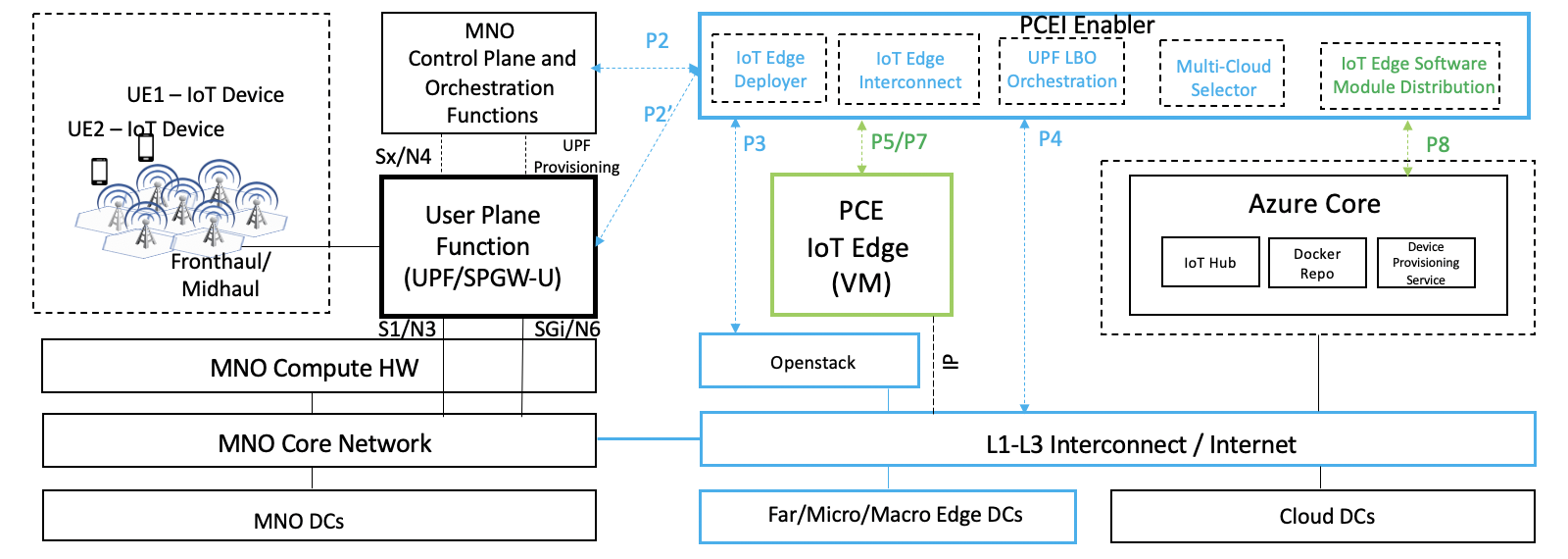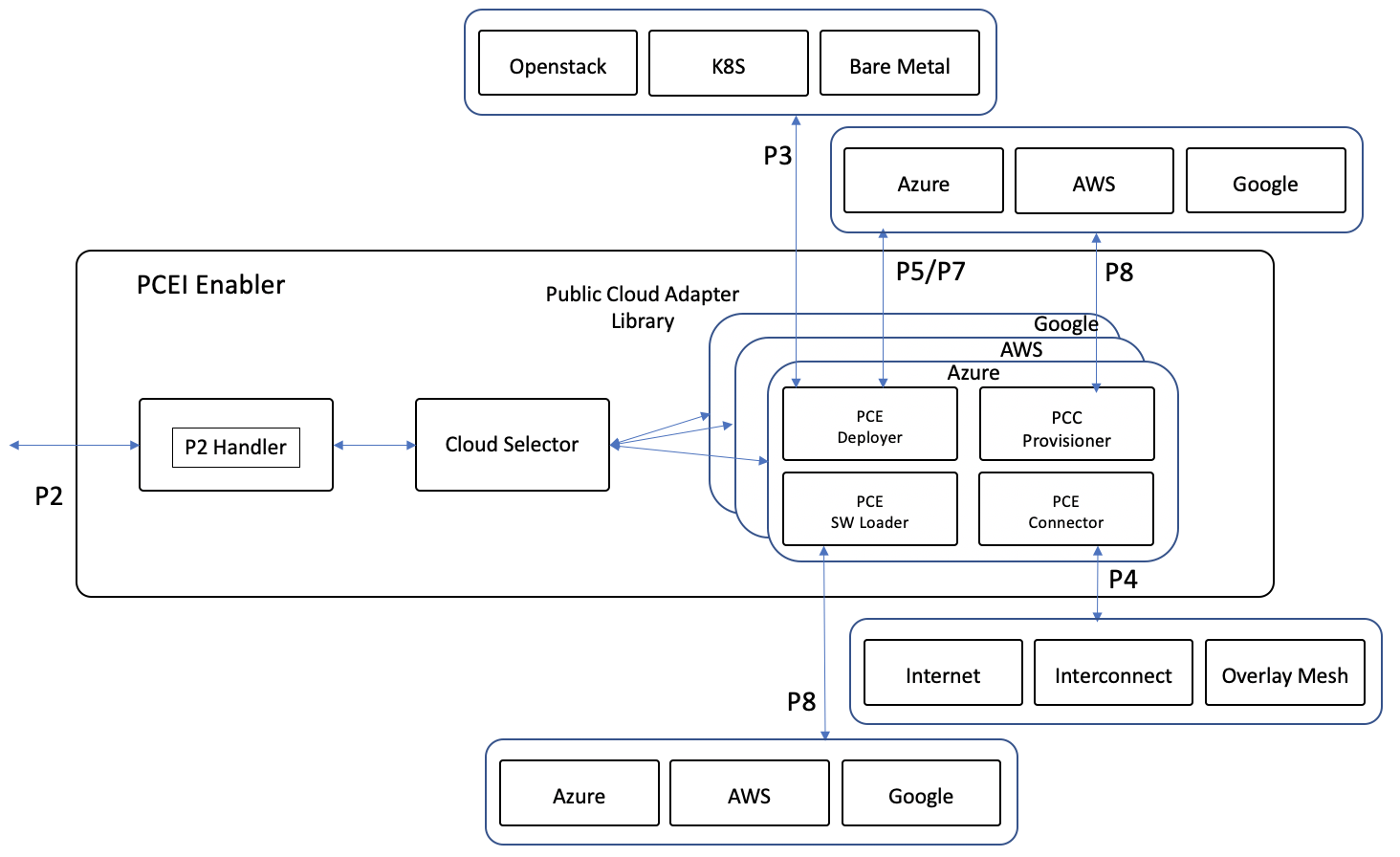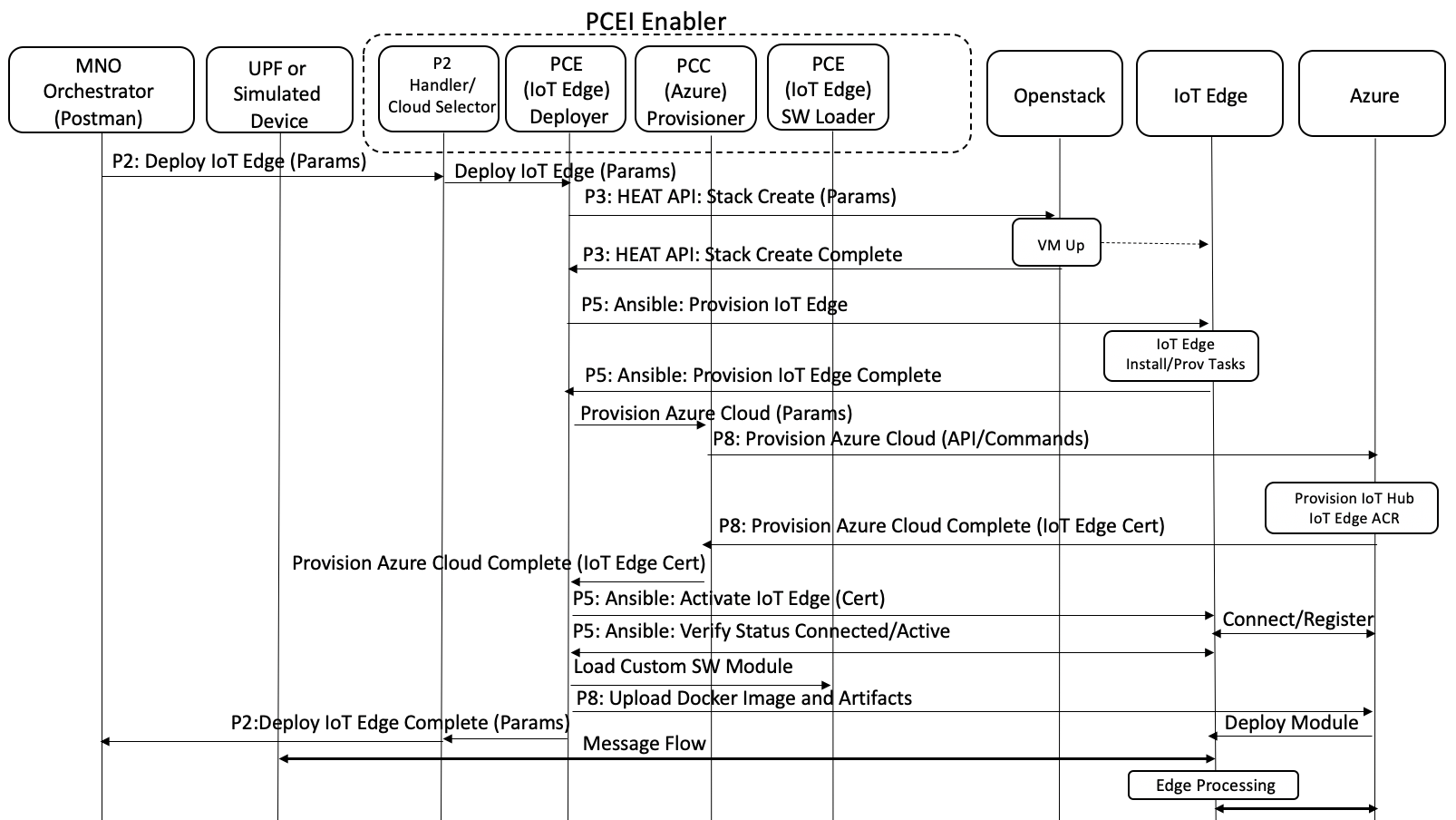...
- UPF Distribution/Shunting capability -- distributing User Plane Functions in the appropriate Data Center Facilities on with qualified compute hardware for routing the traffic to desired applications and network/processing functions/applications.
- Local Break-Out (LBO) – Examples: video traffic offload, low latency services, roaming optimization.
...
- MNO provides a Location Service (LS) compliant with OMA Zonal Presence API (OMA-TS-REST_NetAPI_ZonalPresence)
- MNO may expose the Location Service via the Network Exposure Function (NEF)
- A Public Cloud Edge (PCE) instance is associated with a Zone (collection of Access Points such as small cells) provided by an MNO
- A 3rd-Party Edge (3PE) instance is associated with a Zone (collection of Access Points such as small cells) provided by an MNO
- An application/workload in the PCE requires Location Information (e.g. coordinates of the Access Point) for the UE/subscriber
- An application/workload in the 3PE requires Location Information (e.g. coordinates of the Access Point) for the UE/subscriber
- PCEI Enabler facilitates Zonal Presence API Request/Response routing between PCE and the MNO LS and between the 3PE and the MNO LS
Azure IoT Edge
Assumptions:
- MNO hosts UPF/SPGW-U in their network.
- MNO provisions all UPF functions.
- MNO may request Deployment of IoT Edge on Bare Metal or NFVi via APIs (on P2)
- PCEI Enabler IoT Edge Deployer may request HW or Virtual resources (e.g. VM/Container) (on P3)
- PCEI Enabler IoT Edge Deployer may provision IoT Edge (install runtime, deploy standard modules, register with IoT Hub) via APIs/Deployer Code (on P8/P5)
- PCEI Enabler may request Interconnect for IoT Edge between MNO and Azure (L2/L3) via APIs (on P4)
- PCEI Enabler may request UPF LBO for MNO to direct customer traffic to IoT Edge (on P2/P2’)
- PCEI Enabler may facilitate deployment of custom IoT Edge modules
PCEI Enabler IoT Edge Deployer Functions
- Deploy a base Ubuntu VM
- Download and Install Microsoft GPG public key to apt config
- Install moby engine and cli
- Install azure iot edge
- Modify iot edge config file using customer defined parameters (azure hub url, keys, scope id, etc)
- Deploy iot edge agent
- Deploy iot edge hub module
- Install certificates if edge is used as a gateway
- Restart iot edge
PCEI Enabler IoT Edge Interconnect Functions
- Request virtual connectivity to MNO
- Request virtual connectivity to Azure (e.g. ExpressRoute)
PCEI Enabler IoT Edge Software Distribution Functions
PCEI Enabler for Azure IoT Edge Implementation
Architecture and Interfaces
PCEI Enabler Structure
PCEI for Azure IoT Edge Call Flow (High-level)
Openstack HEAT Example
HEAT Template and Environment Files
Template (pcei_base.yaml)
#####
heat_template_version: 2013-05-23
description: Heat template that deploys PCEI IoT Edge VM in Openstack
##############
# #
# PARAMETERS #
# #
##############
parameters:
pcei_image_name:
type: string
label: Image name or ID
description: Image to be used for compute instance
pcei_flavor_name:
type: string
label: Flavor
description: Type of instance (flavor) to be used
os_private_net_id:
type: string
label: os management network name or ID
description: Private network that connects os components and the VNF
os_private_subnet_id:
type: string
label: os management sub-network name or ID
description: Private sub-network that connects os components and the VNF
os_private_net_cidr:
type: string
label: os private network CIDR
description: The CIDR of the protected private network
pcei_private_ip_0:
type: string
label: VNF IP Address
description: IP address that is assigned to the IoT Edge
pcei_name_0:
type: string
label: VNF name
description: Name of the vPacketGenerator
key_name:
type: string
label: Key pair name
description: Public/Private key pair name
pub_key:
type: string
label: Public key
description: Public key to be installed on the compute instance
#############
# #
# RESOURCES #
# #
#############
resources:
random-str:
type: OS::Heat::RandomString
properties:
length: 4
my_keypair:
type: OS::Nova::KeyPair
properties:
name:
str_replace:
template: base_rand
params:
base: { get_param: key_name }
rand: { get_resource: random-str }
public_key: { get_param: pub_key }
save_private_key: false
# Instance behing vRouter
pcei_private_0_port:
type: OS::Neutron::Port
properties:
network: { get_param: os_private_net_id }
fixed_ips: [{"subnet": { get_param: os_private_subnet_id }, "ip_address": { get_param: pcei_private_ip_0 }}]
pcei_0:
type: OS::Nova::Server
properties:
image: { get_param: pcei_image_name }
flavor: { get_param: pcei_flavor_name }
name: { get_param: pcei_name_0 }
key_name: { get_resource: my_keypair }
networks:
# - network: { get_param: os_private_net_id }
- port: { get_resource: pcei_private_0_port }
user_data_format: RAW
user_data: |
#cloud-config
password: pcei
chpasswd: { expire: False }
ssh_pwauth: True
runcmd:
- [ sh, -xc, "sed -i 's,#UseDNS yes,UseDNS no,' /etc/ssh/sshd_config" ]
- systemctl restart sshd.service
Environment (pcei_base.env)
#########
parameters:
pcei_image_name: ubuntu1604
pcei_flavor_name: l3
os_private_net_id: provider
os_private_subnet_id: provider
os_private_net_cidr: 10.121.11.0/24
pcei_private_ip_0: 10.121.11.91
pcei_name_0: PCEI-IOT-EDGE
key_name: maskey1
pub_key: ssh-rsa AAAAB3NzaC1y
Openstack HEAT Command
openstack stack create -t pcei_base.yaml -e pcei_base.env
